In those halcyon days when people could still meet easily in restaurants—possibly late February or early March—I caught up with my friend Michelle Cooke, who divides her time between New York and Taos, NM, in a quiet corner of a local eatery called El Sabroso. What we ate I can’t remember, but she pulled a book from her bag and I was immediately entranced. It was a small bound volume, 8.25 by 5.25 inches and about half-an-inch thick, each page radiant with simple drawings made up of hundreds of pencil marks. The light seemed to spill and expand in a way that made me think of Sol LeWitt’s gigantic graphite drawings at Dia Beacon, but here was something you could hold in your hand, like a prayer book for our times, filled with unexpected blessings.
They also reminded me of a couple of drawings of Michelle’s that I had seen at the Harwood Museum of Art two years ago (immediately below), which were bought by Larry Bell for his collection (as was the first of her books).
Over the past three decades, Michelle has worked with a remarkable number of mediums—glass, aluminum, feathers, brass, gemstones, and barbed wire, as well as graphite and oil paint—but all seem to be harnessed to exploiting the elusive qualities of light. Even on this relatively diminutive scale, luminosity is the end goal.
As she describes her process here, using the most modest means, miracles can be coaxed from a page and expanded to fill a book.
“I began the first book as a way to test color and composition more quickly—not that these necessarily are fast but they are realized faster than the large ‘Horizon’ pencil drawings, which take months. The studies in the books take several hours to complete. I had not used color in quite some time, and I wanted to experiment with atmospheric qualities of color and color density without committing to a large piece. I’m using colored pencils, which have very intense pigments and can range from a nearly clear veil to an opaque wall, allowing the light within to spill from the page. Depending on shape, size, and placement, each page—or pair of pages—sculpts light in a different way. Each page continues the idea/intent of the previous page and is intended to visually document my thought process.”
At the end is the index she tucks into a back pocket of the book, which gives the page number and type of pencil, color, and manufacturer’s color identification. “Basically it allows me to locate the correct color, which can be difficult if I’ve used more than one color or if I’ve used an ink pigment vs. a wax pigment pencil,” she says.
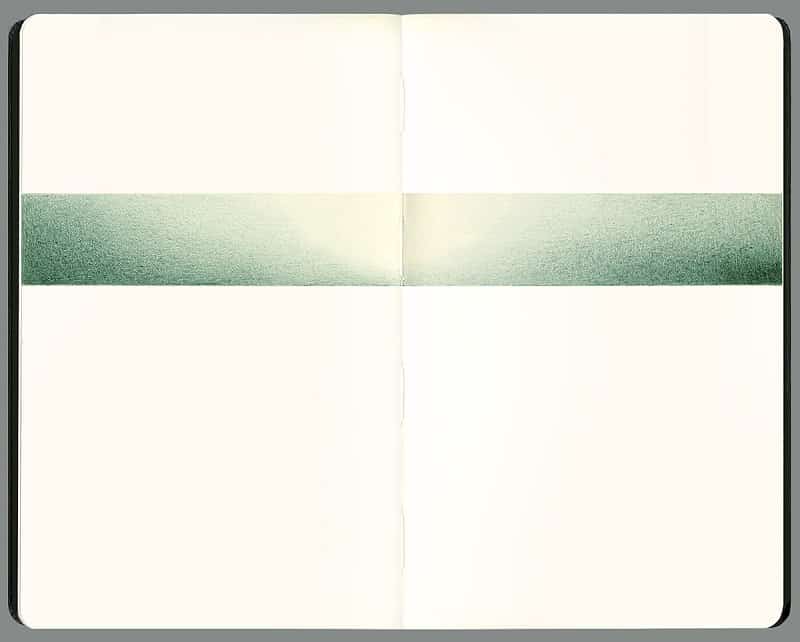
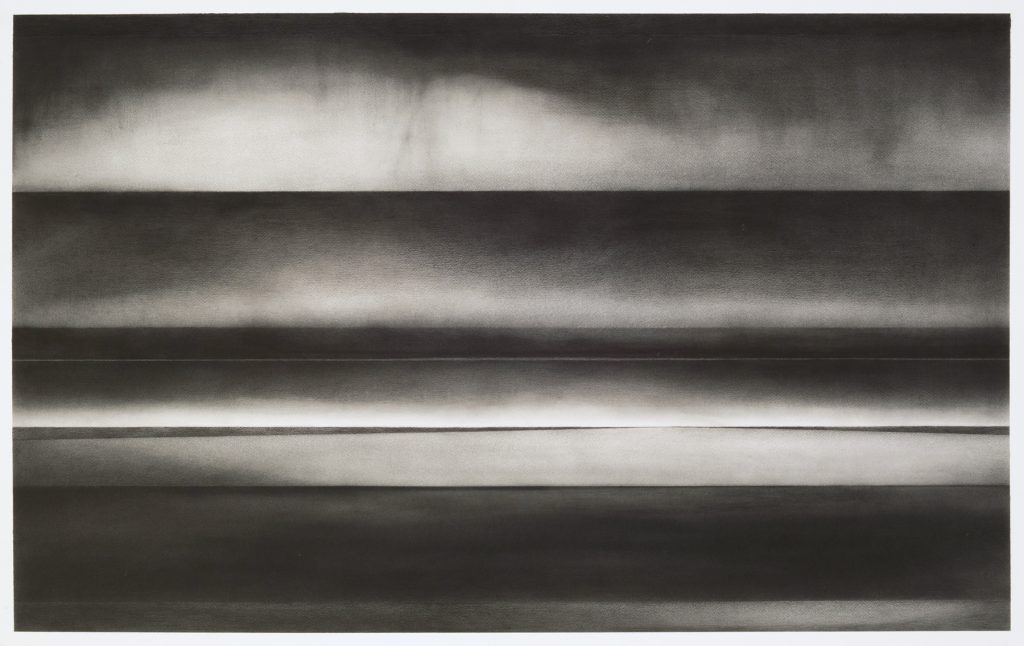
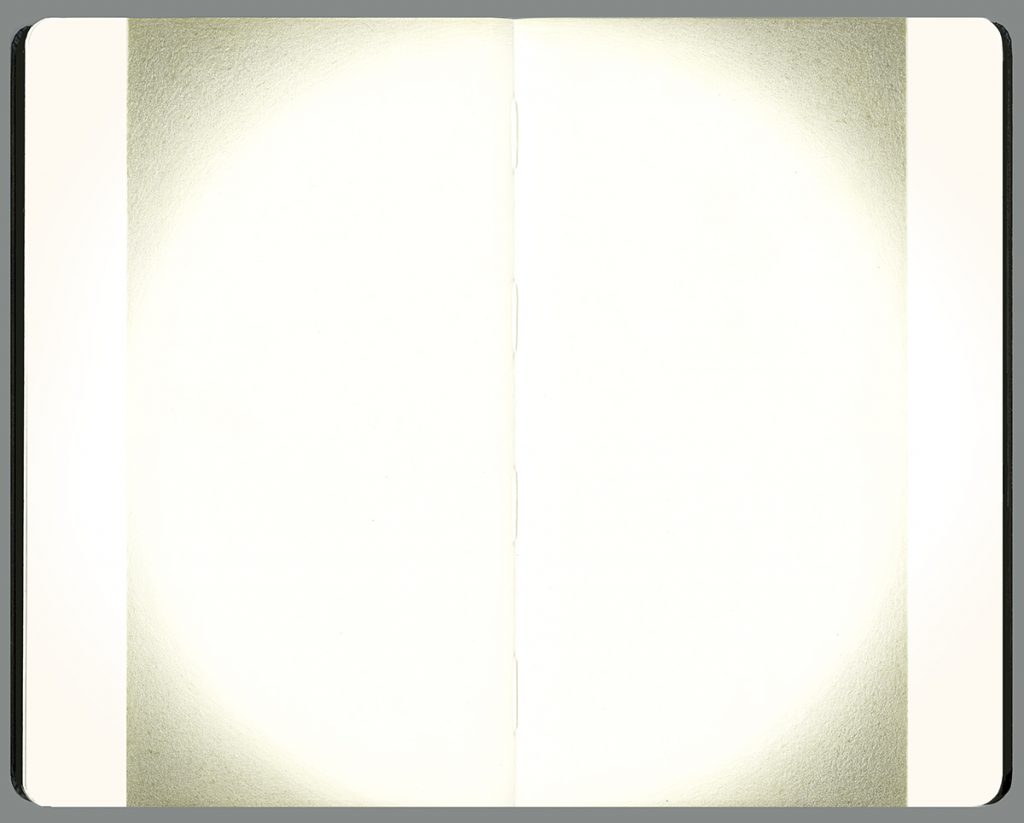
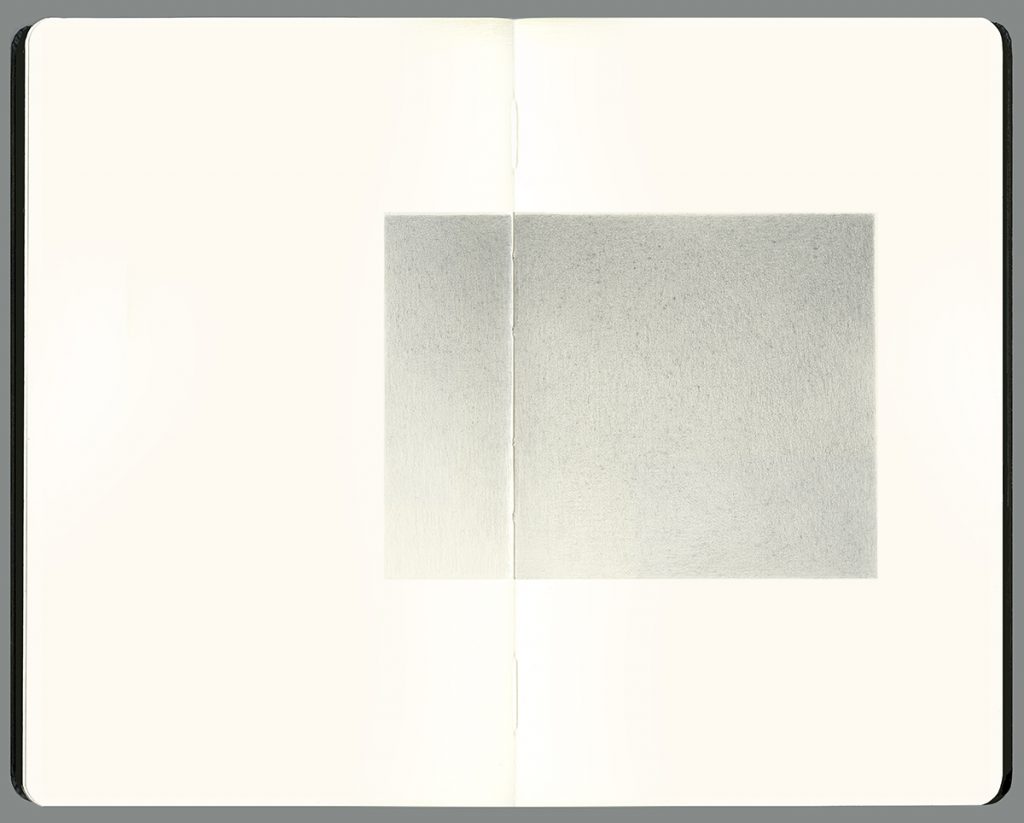
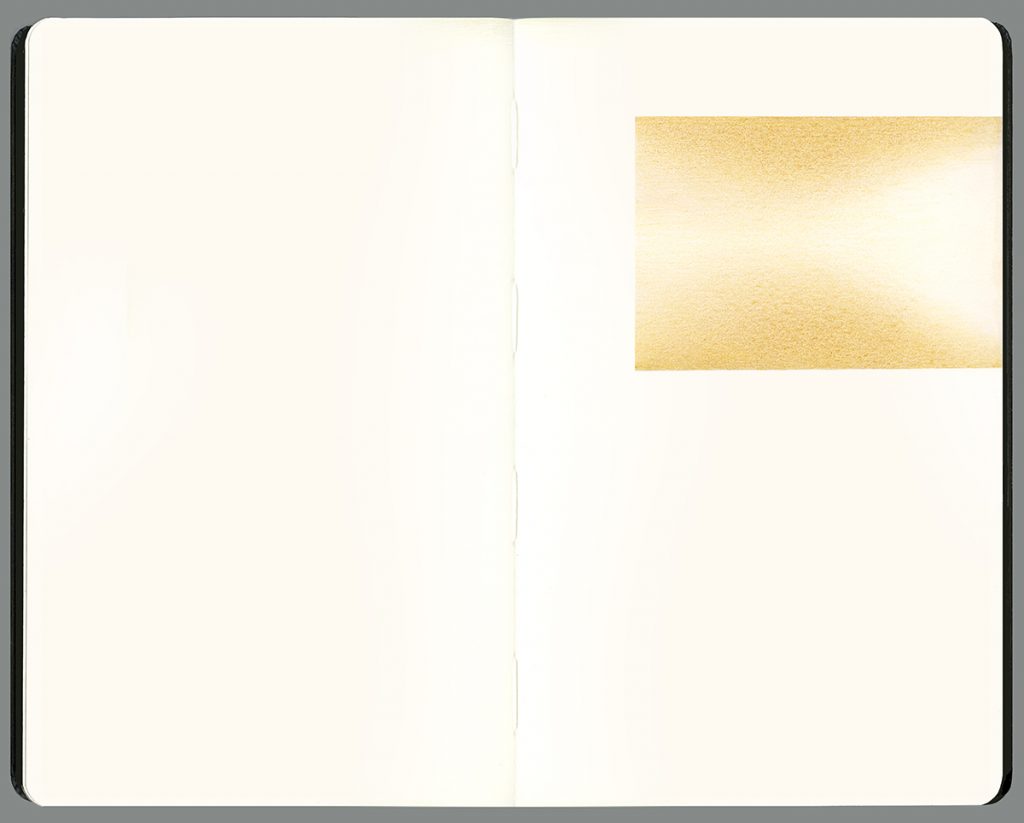
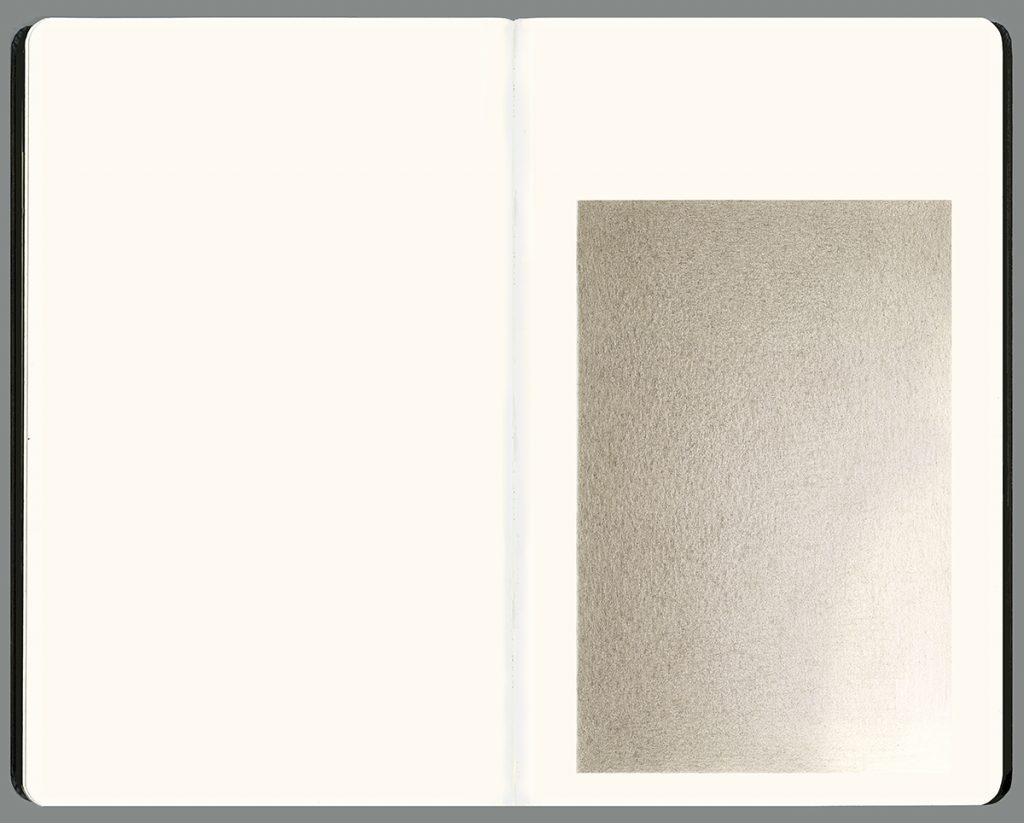
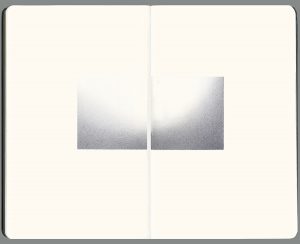
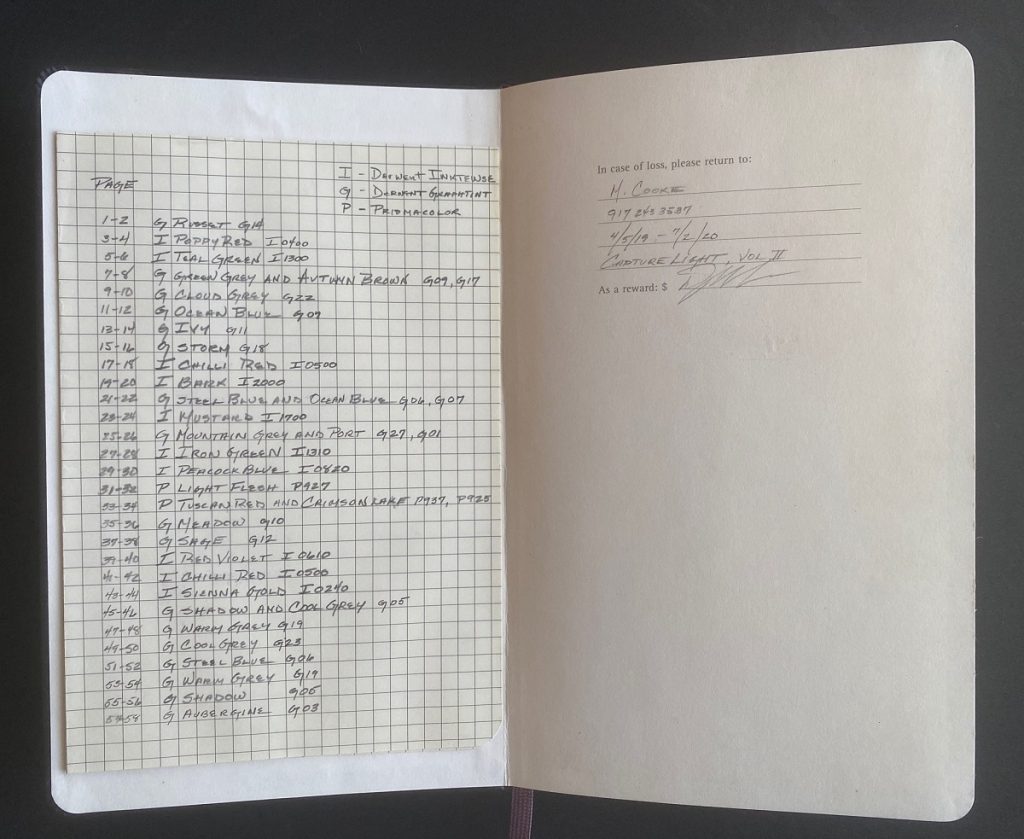
Amazingly beautiful drawings! Bravo.
I have seen this book of Michelle’s and it is fabulous. Sensitive, with great depth and insight into the line and textures. Kudos to her.
Powerful, luminous, and sublime. I also love that she filled out the “if lost” interior cover. I can’t help but wonder if someone would, or if the book might embark on some decades long adventure of its own?
Wow I wish I had made this book. It is fabulous!!
The book is divine! So are the larger drawings.
Thank you Ann for sharing this marvelous work of Michelle’s. It is elegance.
Very intimate and beautiful drawings. The luminous quality in each piece is powerful.
Wonderful! Love Michelle and her work, and this collection of luminous drawings is sublime, each enthralling. Also love the “if found” section she added ~
Thank you for all your kind comments, they have warmed my heart.
ps. I’ve been thinking about the “if found” page. It seems appropriate for the title page of a book and I guess I like to believe in the possibility.